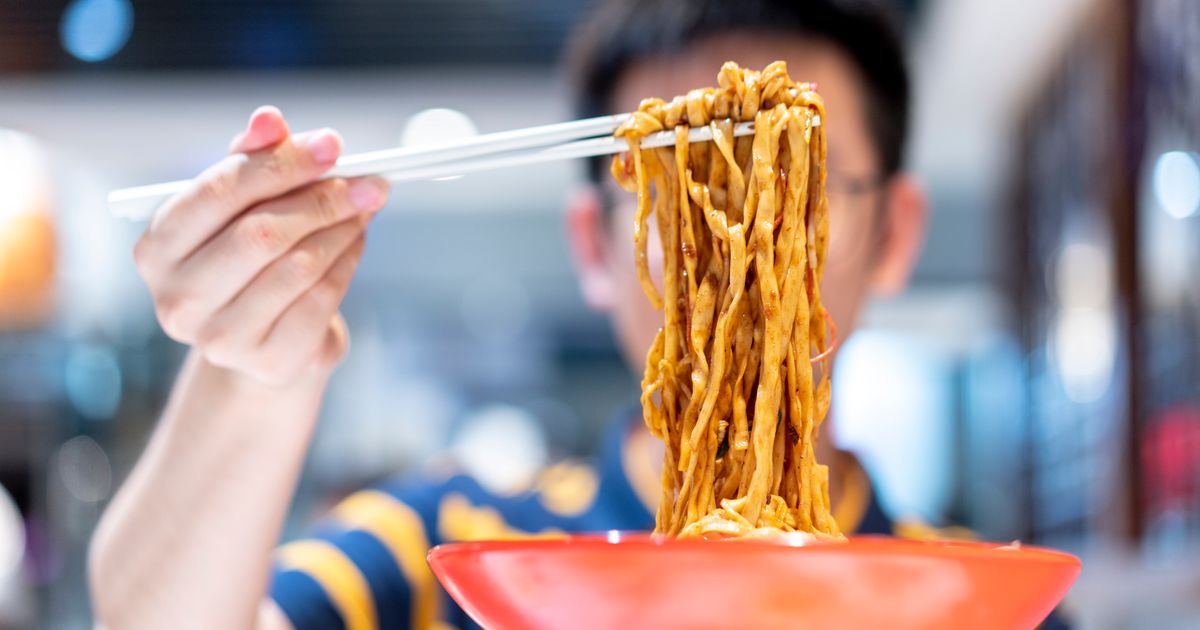The concept of combining ingredients that typically don’t go together has been a long-standing tradition among chefs, but a new social media trend is taking it to the next level. The hashtag #ChaosCooking has gained significant popularity on platforms like TikTok and Instagram, with millions of views and thousands of posts. It has even been mentioned in the Season 2 trailer of “The Bear”. Chaos cooking involves not only combining unconventional ingredients but also using whatever you have on hand in your fridge and pantry. It’s all about being resourceful and finding creative ways to make a meal.
One example of chaos cooking in action is showcased in a TikTok video by user @MyCursedBrain. She combines edamame pasta, peanut butter, Everything But the Bagel seasoning, chili powder, cucumbers, and various other ingredients to create her own version of a peanut butter noodle dish. Her repertoire also includes innovative creations like Big Mac pizza and Filipino spaghetti and lumpia burritos.
Stephen Chavez, a chef-instructor at the Institute of Culinary Education, is well-acquainted with the concept of chaos cooking. He recalls his mom making “musgo salad” in the summer and “musgo soup” in the winter, which essentially consisted of using up any ingredients that needed to be used. Chavez himself frequently prepares “musgo meals” as a way to reduce food waste.
While chaos cooking can help minimize waste, it’s important to keep a few tips in mind to ensure your meal tastes delicious. Here are seven tips from professional chefs:
1. Start with an ingredient you’re already skilled at cooking. Although chaos cooking encourages using unfamiliar ingredients or experimenting with new cooking methods, James Beard-winning chef Ken Oringer suggests starting with a core ingredient you’re comfortable working with. This provides a solid foundation for your dish, allowing you to be more adventurous with other ingredients.
2. Decide on a theme for your dish. Once you’ve chosen a core ingredient, chef Chavez recommends selecting a theme or flavor profile to guide your ingredient combinations. This will make it easier to determine what seasonings and sauces to use. For example, if you want to create a Thai-inspired pasta dish, you can incorporate Thai-inspired flavors and spices.
3. Add a wild-card ingredient. Chaos cooking is an opportunity to step out of your comfort zone and try something new. Chef Dafne Mejia suggests experimenting with unconventional ingredients like bourbon or baking soda. Bourbon can add a smoky flavor to dishes, while baking soda can balance the acidity in tomato-based sauces.
4. Cook your ingredients separately. Although chaos cooking may seem like throwing everything into a pot or pan, chef Chavez advises against this. To achieve optimal textures and flavors, it’s important to cook each ingredient separately. This prevents overcrowding and ensures even cooking. For example, if you’re making stir-fry, cook the protein separately from the vegetables.
5. Aim for balanced flavors. Chef Ann Ziata emphasizes the importance of balance in a meal. A great dish should incorporate a variety of basic tastes like sweet, salty, bitter, sour, and rich. It doesn’t have to be equal portions of each, but each element should be present to create a truly delicious meal.
6. Add spices and flavors incrementally. One common mistake in chaos cooking is adding too many ingredients in an attempt to make the dish more extravagant. Chef Ziata advises considering the purpose of each ingredient before adding it. If it enhances flavor or texture, go ahead and include it. However, if it’s unnecessary or solely for the sake of being viral, it’s best to skip it. Similarly, chef Oringer recommends not overdoing spices or sauces, as it can be challenging to balance the flavors once they’re already in the dish.
7. Consider the texture of your dish. Chefs Ziata and Mejia highlight the importance of texture in a meal. Soft dishes can benefit from added crunch or crispiness, while dishes with baked or roasted elements may require a sauce to prevent dryness. Balancing textures can elevate a dish and make it more enjoyable to eat.
With these tips in mind, you’re ready to embrace the chaos of cooking and discover new and exciting meals. Who knows, you might just create the next viral sensation like ramen bolognese!
Denial of responsibility! VigourTimes is an automatic aggregator of Global media. In each content, the hyperlink to the primary source is specified. All trademarks belong to their rightful owners, and all materials to their authors. For any complaint, please reach us at – [email protected]. We will take necessary action within 24 hours.


